Chris Abani's Virgin of Flames
by Obi Nwakanma
CHRIS Abani writes with blinding power. His first novel, Graceland (Alfred Knopf, 2003) established his bona fides as an important voice of contemporary fiction, and his latest offering, The Virgin of the Flames (Penguin 2007) confirms without doubt that his talent is no fluke; it is the work of considerable imaginative authority. The Virgin of the Flames takes us between Afikpo and East Los Angeles, and beyond to the territories of the imagination, where dark and unbound emotions collide and re-ignite, and create shimmering shards of meaning.
We arrive at the end of the story breathless. The subject of Abani’s new novel is identity - the ambiguities that frame the subject of individual location and translocation, and the subtle varieties inherent in the various bis: bi-raciality, bi-culturality, bi-genderity, bi-nativism, bi-nationalism, bi-sexuality - and we sense that there is no resolution to the question about this apparent struggle for fixity; to become and be wholly something; easily, discernibly, essentially, something. Black, bi-racial child of an Igbo NASA scientist father and a Salvadorian mother, tries to obscure what fundamentally is the central dilemma of the novel - his movement towards self realization.
He conceives of himself fundamentally as a mesh of identities, a texture of “silence, sound, color and image” - an embodiment of the multiplicity or the diversity of East LA. He belongs, not to a single identity, he claims, even though he remembers his father, the Igbo scientist saying to him in their last time together before he ships off to war, “echefulam” - never forget me - remember who you are. But Black had grown to see himself as belonging to shifting or transmuting identities with no particular or specific ethnic or national affiliation - just like his graffiti. Bomboy the Rwandan butcher however demands and sees a neat and pure category, and says to him, “Your father was an African, so therefore you are African.” A thorough postmodern conundrum - this struggle between bare essentialism and complex identities. It is impossible indeed to be one thing any more, Abani suggests, because we have consistently and radically moved the questions beyond their fixed places to the idea of the human subject morphing through encounters, absorbing every encounter, possessing it, and encrypting into these encounters, the formalities of our many lives as we shift and dismantle various meanings or ideas of the self and the boundaries that once enclosed the self.
But it is also possible to see in Abani’s story, the pathology of the restless ambiguous subject or self; the quest to fully identify and locate himself within a stable sense of place and time, in spite of the difficulty, given his own personal history, to fully, in the end, enclose himself into a single clean idea of the clan. He embodies that sense of the crossroads and its tense and potent neutrality: son of the marriage of two cultures - African and European - Abani’s Edda, Igbo father met his English mother as a student in Oxford in the 1950s, at the height of the transformations in the relationship between the empire and its margin. Chris Abani grew up in both worlds, first in Nigeria, his parents marriage having survived the civil war.
He attended schools in Nigeria, and went to the Imo State University, where he read English, wrote a juvenilia, and dabbled into theatre under the playwright Tess Onwueme, and then forced by circumstance to relocate to England, and subsequently to the United States, where he currently teaches Creative Writing, at the University of California, Riverside. He comes to us, thus representing the multiple stories he too embodies in his various locations and dislocations, and in the end, he expresses through a powerfully searing look at his contemporary world, the difficulties present in that question that Chinua Achebe himself once proposed, about whether the writer and his audience still live in the same place.
Chris Abani’s style is cosmopolitan: he engages cultures and absorbs elements from various encounters with his metropolitan gaze; he writes principally about the marginalized - those who are outsiders to society: thieves, murderers, and trans-sexuals - the damned - but he asks us to look beyond the categories we impose on them and see their human struggles and dilemmas behind the pale veil of the tattoo artist Iggy, the figure of Cassandra, and the courtesan of the Hollywood elite, and the mask of Sweet girl, the Mexican trans-sexual striper, the snide, laconic ironies of Bomboy Dickens, the Rwandan butcher, with a murderous past, with blood in his hands but who had learned possibly from his genocidal experience, to carve cadavers neatly, without blood in his hands, nor should we see only the habits of living above the “Ugly Store.” Such characters populate Abani’s novel.
The Virgin of the Flames is a story about intersections: the setting is in East LA but it moves back and forth, and we glimpse its center: that decadent beauty of a crumbling landscape, its stone towers in ruins marking the ruins of a city in which lives mesh and fragment; the collision is often like a lunatic high; a kinetic force of creation, of transgressive moments and conversations; of resplendent visual renditions of the human drama; brush strokes of lives of lives existing in the intersection of marginal cultures with all the tension of outsiderhood.
The intersection of East and West, of African-American and Latino lives, and the ocular festivals of their conflicts, in that place “iridescent in its concrete sleeve.” All these provide the imaginative canvas for the complicated mural artist, Black, whose true muse is the virgin, mother of God, reified into the living embodiment of that duality, Sweet Girl, the transgendered dancer, who becomes his nemesis. The virgin mother is everywhere - and one may even put it down to Abani’s obsessive Catholicism, having grown up a Catholic, an altar boy, a n ex-seminarian.
But the flaming virgin of the novel is also a mystic force of apocalyptic proportions: Black’s vision of her, floating in the wind and the curtain, reminds us of the passion of a suffering, on whom ritual pain is inflicted by the visions of the female force -
represented in the mother. The virgin figure is such a power that can make an immigration lawyer to become less sanguine, and accept fees in kind, “even goats, chickens and fish;” identities collapse and can be bought with hard cash in the Passport market, much like the one in Lagos. These transformations of identities at the core of the novel, makes The Virgin of the Flames continuously slippery, and so much more.
It is the story about race and segregation in American cities, about smoking mirrors of the self, about immigration and assimilation, about devotion and piety, the sort that deals with faith irreverently. And we can see this in the description of the figure of Jesus with an erect phallus, a sense of both the comic and the outrageous.
The Virgin of the Flames is a violent story with scenes of rape and torture, and the perverse; but they are scenes finely and forcefully wrought. They remain memorable and almost indelible. It is the story of ghosts, for as Iggy puts it, “ghosts are the things…we make with memory.” The Virgin of the Flames is therefore an incomparable act to compose a novel of pure quixotic elegance, a mysterious excursus into the depths of the human psyche, for Abani’s story is layered with too many meanings: what you read is often not what you see; you are forced to look deeper, and deeper still. It is an unforgettable imaginative performance. A great contribution to the emerging canon of new world literature generally, and Nigerian fiction specifically.
Sunday, July 8, 2007
Subscribe to:
Post Comments (Atom)

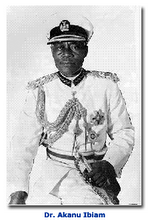
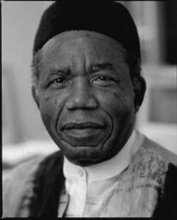

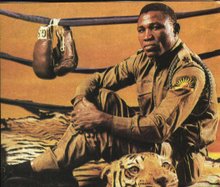
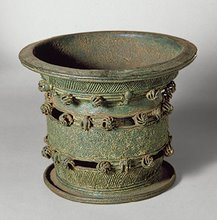
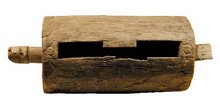
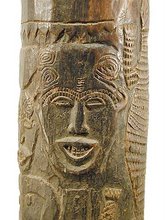
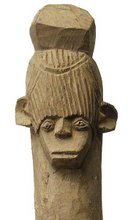
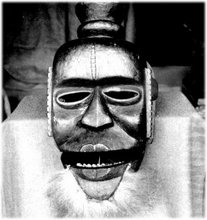

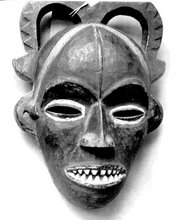
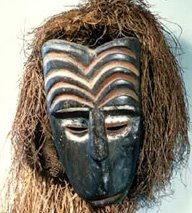
No comments:
Post a Comment